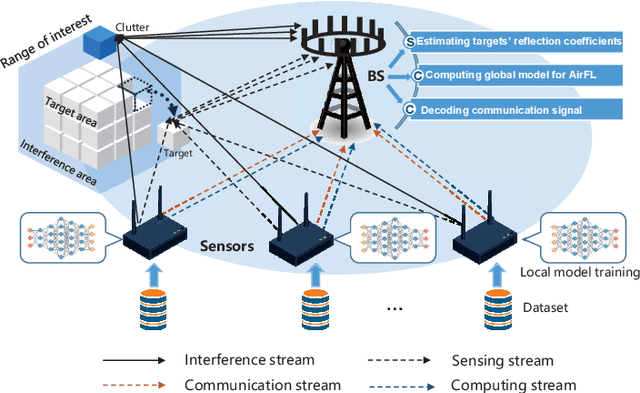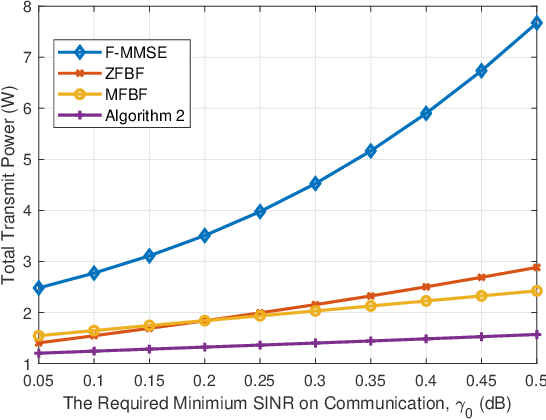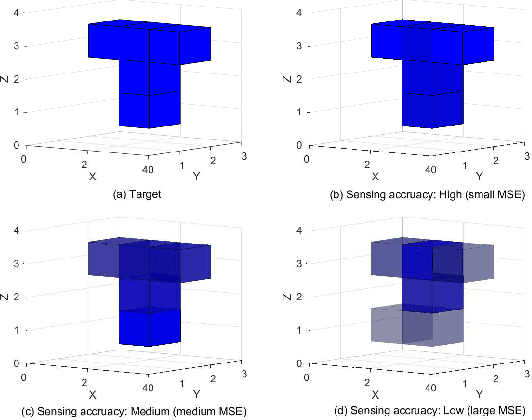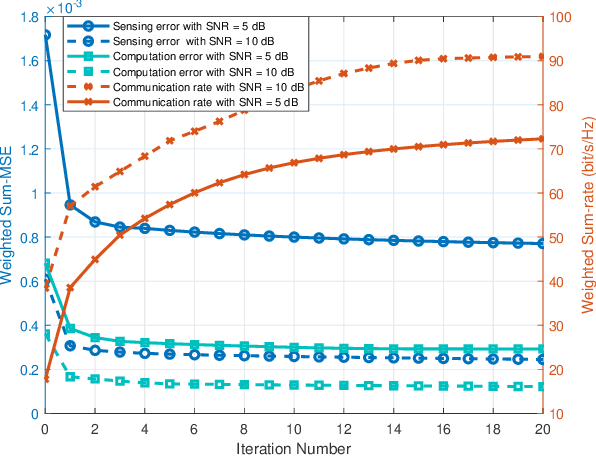Qiao Qi
Deep Learning-based Joint Channel Prediction and Multibeam Precoding for LEO Satellite Internet of Things
May 27, 2024



Abstract:Low earth orbit (LEO) satellite internet of things (IoT) is a promising way achieving global Internet of Everything, and thus has been widely recognized as an important component of sixth-generation (6G) wireless networks. Yet, due to high-speed movement of the LEO satellite, it is challenging to acquire timely channel state information (CSI) and design effective multibeam precoding for various IoT applications. To this end, this paper provides a deep learning (DL)-based joint channel prediction and multibeam precoding scheme under adverse environments, e.g., high Doppler shift, long propagation delay, and low satellite payload. {Specifically, this paper first designs a DL-based channel prediction scheme by using convolutional neural networks (CNN) and long short term memory (LSTM), which predicts the CSI of current time slot according to that of previous time slots. With the predicted CSI, this paper designs a DL-based robust multibeam precoding scheme by using a channel augmentation method based on variational auto-encoder (VAE).} Finally, extensive simulation results confirm the effectiveness and robustness of the proposed scheme in LEO satellite IoT.
Deep Learning-based Design of Uplink Integrated Sensing and Communication
Mar 03, 2024Abstract:In this paper, we investigate the issue of uplink integrated sensing and communication (ISAC) in 6G wireless networks where the sensing echo signal and the communication signal are received simultaneously at the base station (BS). To effectively mitigate the mutual interference between sensing and communication caused by the sharing of spectrum and hardware resources, we provide a joint sensing transmit waveform and communication receive beamforming design with the objective of maximizing the weighted sum of normalized sensing rate and normalized communication rate. It is formulated as a computationally complicated non-convex optimization problem, which is quite difficult to be solved by conventional optimization methods. To this end, we first make a series of equivalent transformation on the optimization problem to reduce the design complexity, and then develop a deep learning (DL)-based scheme to enhance the overall performance of ISAC. Both theoretical analysis and simulation results confirm the effectiveness and robustness of the proposed DL-based scheme for ISAC in 6G wireless networks.
Energy-Efficient Design of Satellite-Terrestrial Computing in 6G Wireless Networks
Nov 15, 2023Abstract:In this paper, we investigate the issue of satellite-terrestrial computing in the sixth generation (6G) wireless networks, where multiple terrestrial base stations (BSs) and low earth orbit (LEO) satellites collaboratively provide edge computing services to ground user equipments (GUEs) and space user equipments (SUEs) over the world. In particular, we design a complete process of satellite-terrestrial computing in terms of communication and computing according to the characteristics of 6G wireless networks. In order to minimize the weighted total energy consumption while ensuring delay requirements of computing tasks, an energy-efficient satellite-terrestrial computing algorithm is put forward by jointly optimizing offloading selection, beamforming design and resource allocation. Finally, both theoretical analysis and simulation results confirm fast convergence and superior performance of the proposed algorithm for satellite-terrestrial computing in 6G wireless networks.
Integrating Sensing, Computing, and Communication in 6G Wireless Networks: Design and Optimization
Jul 08, 2022



Abstract:The roll-out of various emerging wireless services has triggered the need for the sixth-generation (6G) wireless networks to provide functions of target sensing, intelligent computing and information communication over the same radio spectrum. In this paper, we provide a unified framework integrating sensing, computing, and communication to optimize limited system resource for 6G wireless networks. In particular, two typical joint beamforming design algorithms are derived based on multi-objective optimization problems (MOOP) with the goals of the weighted overall performance maximization and the total transmit power minimization, respectively. Extensive simulation results validate the effectiveness of the proposed algorithms. Moreover, the impacts of key system parameters are revealed to provide useful insights for the design of integrated sensing, computing, and communication (ISCC).
 Add to Chrome
Add to Chrome Add to Firefox
Add to Firefox Add to Edge
Add to Edge